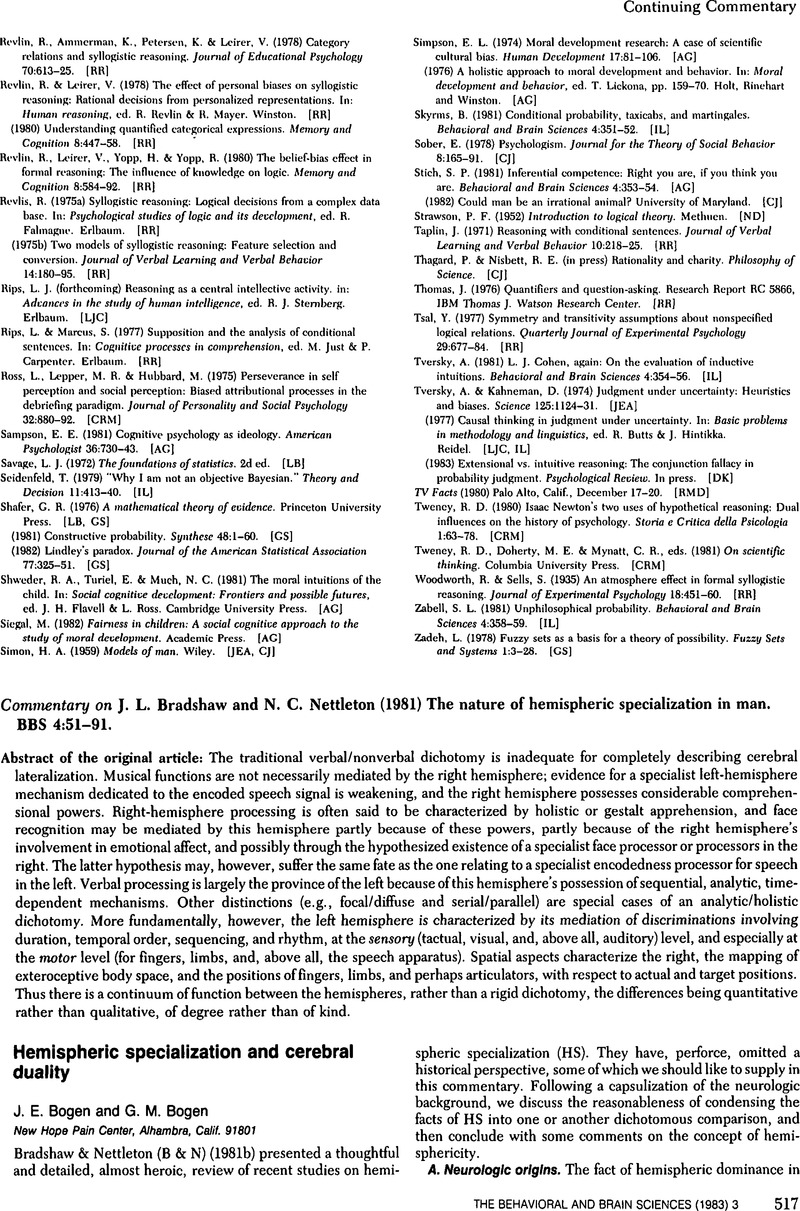Crossref Citations
This article has been cited by the following publications. This list is generated based on data provided by Crossref.
Gordon, Harold W.
1986.
The Cognitive Laterality Battery: Tests of Specialized Cognitive Function.
International Journal of Neuroscience,
Vol. 29,
Issue. 3-4,
p.
223.
Rodríguez, Dionisio Manga
and
Campos, Francisco Ramos
1986.
La aproximación neuropsicológica a la dislexia evolutiva II: Lateralización hemisférica y aplicaciones educativas.
Infancia y Aprendizaje,
Vol. 9,
Issue. 34,
p.
57.
Sapin, Linda R.
Berrettini, Wade H.
Nurnberger, John I.
and
Rothblat, Lawrence A.
1987.
Mediational factors underlying cognitive changes and laterality in affective illness.
Biological Psychiatry,
Vol. 22,
Issue. 8,
p.
979.
Gordon, Harold W.
1989.
Hemisphericity and its Validity for Education, Vocation, and Cognitive Style.
International Journal of Neuroscience,
Vol. 47,
Issue. 1-2,
p.
47.
Berry, Louis H.
1990.
Effects of Hemispheric Laterality on Color-Information Processing.
Perceptual and Motor Skills,
Vol. 71,
Issue. 3,
p.
987.
Zaidel, Eran
1998.
Stereognosis in the chronic split brain: hemispheric differences, ipsilateral control and sensory integration across the midline.
Neuropsychologia,
Vol. 36,
Issue. 10,
p.
1033.
2006.
Vol. 5,
Issue. ,
p.
46.
Trevarthen, Colwyn
2015.
International Encyclopedia of the Social & Behavioral Sciences.
p.
291.





